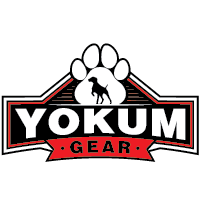Caring for a reactive dog presents unique challenges, especially when it comes time for boarding. Reactive dogs may respond aggressively or fearfully to stimuli, making traditional boarding environments stressful and sometimes unsafe for them. However, there are specialized solutions to ensure both your peace of mind and your dog's well-being while you're away. This article delves into the best dog boarding solutions for reactive dogs, from choosing the right facility to preparing your pet for their stay.
Understanding Reactive Dogs
Reactive dogs are those that overreact to certain stimuli such as other dogs, people, or unfamiliar environments. Their reactions can include barking, lunging, or showing signs of extreme anxiety. Often this behavior stems from fear, lack of socialization, or previous traumatic experiences. It’s essential to find a boarding solution that understands these factors and can provide a safe and comfortable environment for your dog.
Choosing the Right Facility
Not all boarding facilities are created equal, particularly when it comes to accommodating reactive dogs. When researching potential boarding options, look for the following attributes:
- Experience with Reactive Dogs: Ensure the staff is experienced and trained in managing reactive dogs. They should employ techniques that minimize stress and aggression.
- Individualized Care: Facilities that offer isolated or semi-isolated spaces can prevent exposure to triggers like other dogs or excessive noise.
- Calm Environment: Smaller facilities or those that provide more human interaction tend to be more tranquil, reducing stress for reactive dogs.
- Availability of Customizable Plans: Some dogs might benefit from personalized boarding plans that include specific activities, medications, or dietary needs.
In-Home Boarding
Another excellent option for boarding reactive dogs is in-home boarding with a pet sitter. This service involves a professional pet sitter either staying in your home or bringing your dog into their own home, where they are the sole focus. This environment can drastically reduce stress for reactive dogs by maintaining their routine and providing familiar surroundings. When considering this option, make sure:
- The pet sitter is experienced with reactive dogs and understands their specific needs.
- They are willing to follow your dog's daily routine, including feeding, exercise, and any behavioral strategies that you use.
- Arrangements are made for a meet-and-greet session to gauge compatibility.
Medication and Holistic Approaches
In some cases, medication might be necessary to help manage your dog's reactivity in a boarding setting. Consult your veterinarian about anti-anxiety medications or calming supplements that could be beneficial for short-term stress relief. Additionally, holistic approaches such as pheromone diffusers, calming collars, or herbal remedies might also help ease your dog's anxiety.
Preparing Your Dog for Boarding
Preparation can significantly impact how well your reactive dog adjusts to boarding. Here are a few tips to prepare your dog:
- Familiarization Visits: If possible, take your dog to visit the boarding facility or sitter’s home several times before the actual boarding date. This helps acclimatize them to the new setting and reduces anxiety.
- Bring Comfort Items: Pack your dog’s favorite toys, bedding, and any other familiar items. Smelling familiar scents can provide comfort and reduce stress.
- Maintain Routine: Try to keep your dog’s feeding and exercise routine as consistent as possible, even in the days leading up to boarding.
- Clear Instructions: Provide detailed instructions to the boarding facility or sitter regarding your dog’s triggers, behavioral strategies, and any other pertinent information.
Monitoring and Communication
Once you've chosen the appropriate boarding solution, ensure there is a clear line of communication. Check-in regularly and ask for updates and photos. This will not only give you peace of mind but also help you identify if any issues arise and address them promptly.
Conclusion
Boarding a reactive dog requires careful consideration and planning, but it is entirely feasible with the right approach. Evaluating boarding facilities based on their experience with reactive dogs, considering in-home boarding options, preparing your pet thoroughly, and maintaining open communication are all crucial steps. By tailoring the boarding experience to fit your dog’s unique needs, you can ensure they have a safe, stress-free environment while you’re away.

